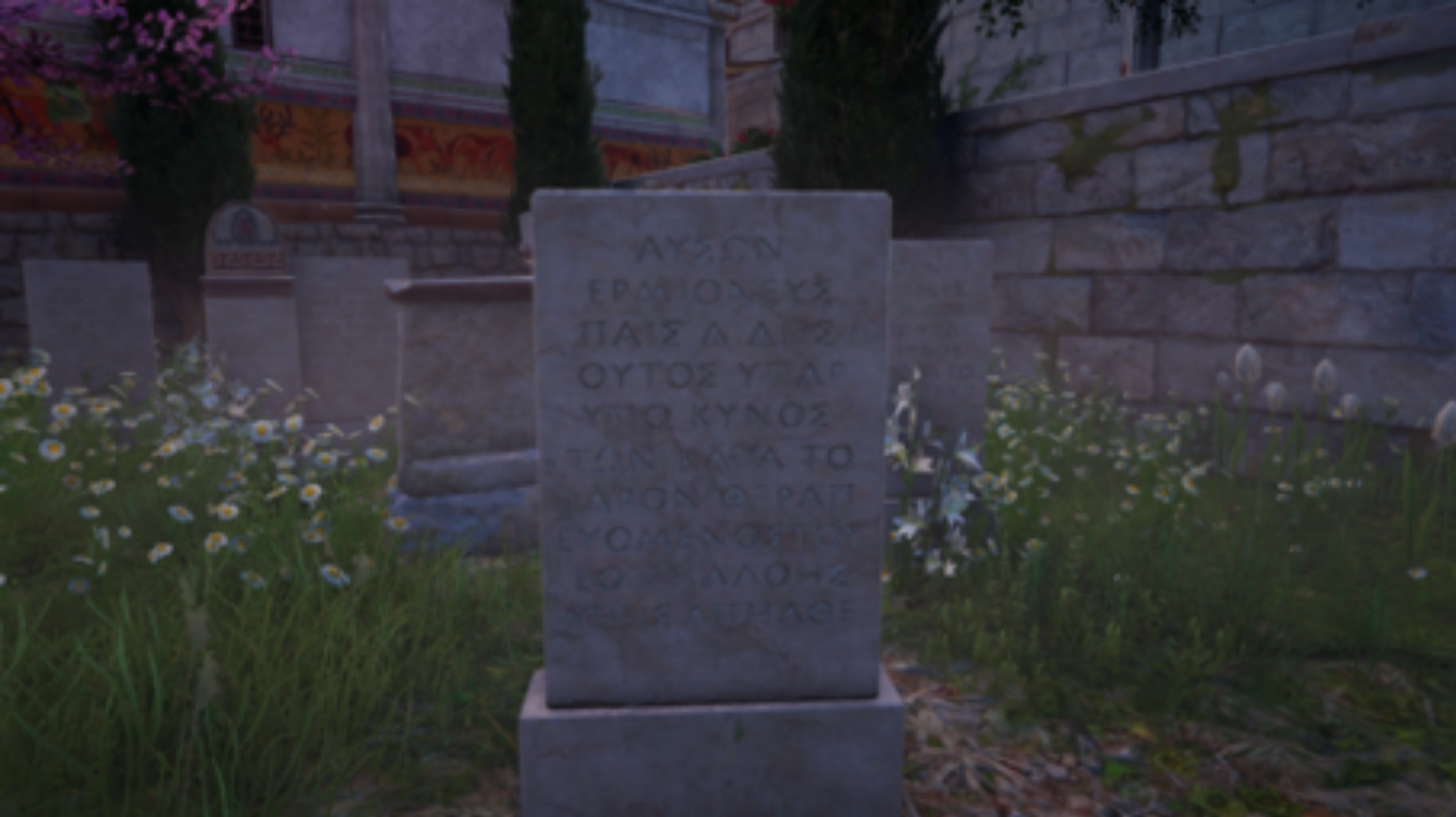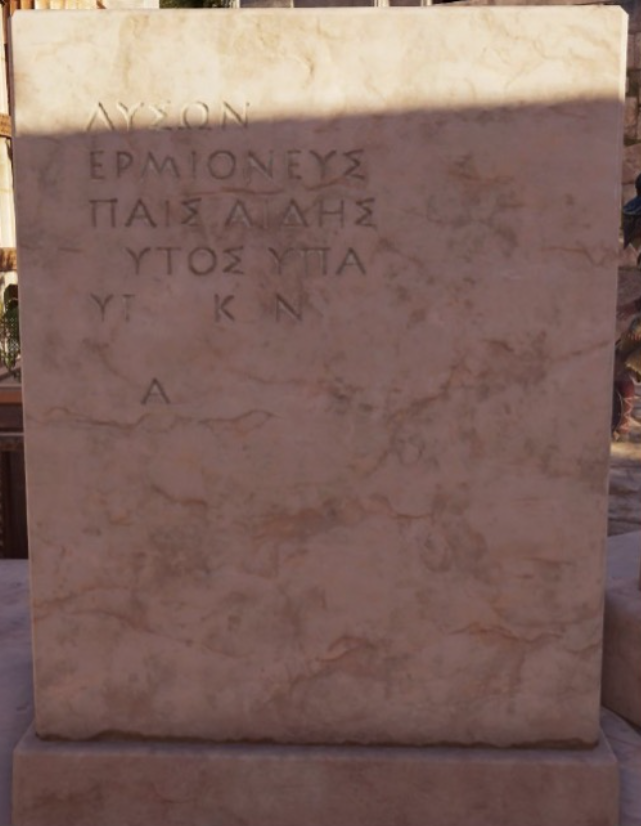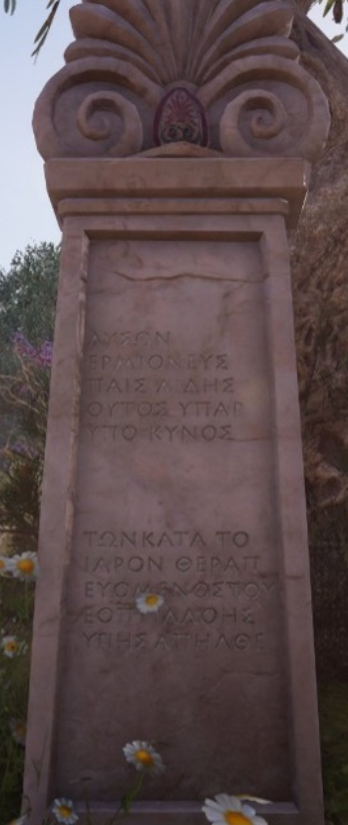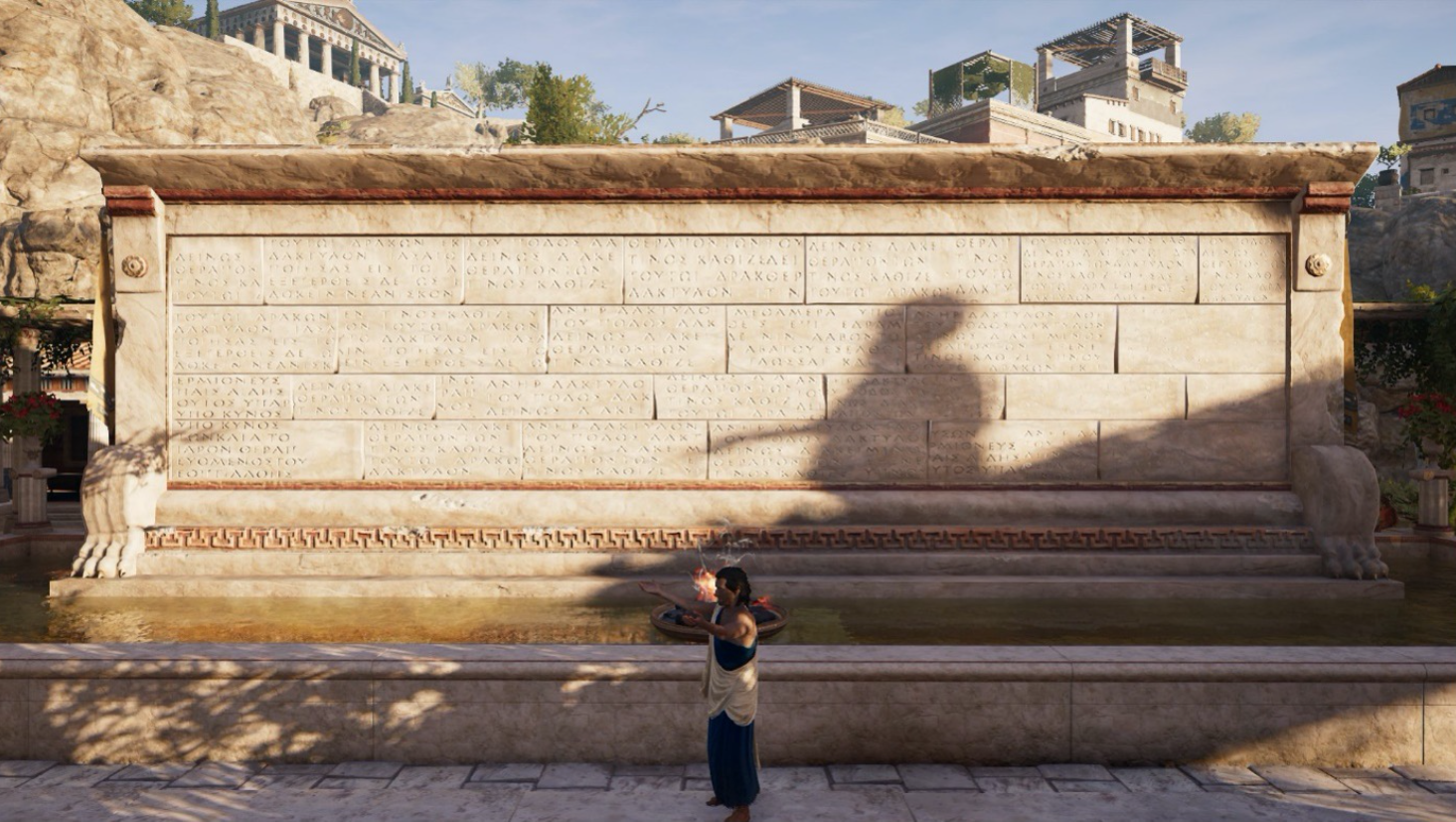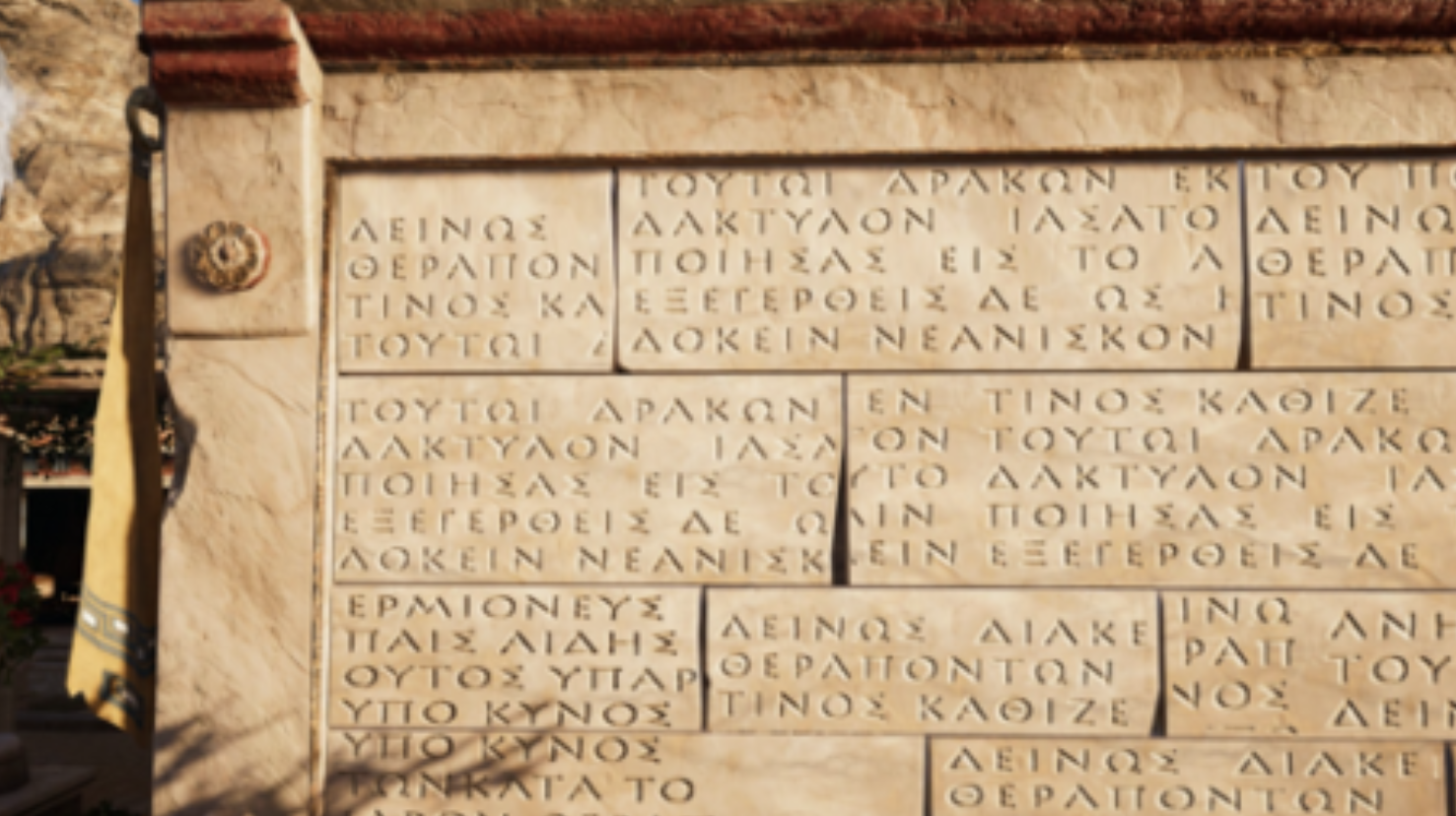Scripta Manent: The Inscriptions of Assassin’s Creed Odyssey
· Alexander Vandewalle
·
·
o Jan 21, 2022
o
o 5 min read
Set during the first nine years of the Peloponnesian War (431-422 BCE), the highly popular and successful video game Assassin’s Creed Odyssey (2018, Ubisoft Quebec) introduces its players to a meticulously detailed and beautifully recreated version of classical Greece on a scale hitherto unseen. It was generally received positively by game audiences, and may possibly even be credited with generating increasing academic interest into the video game medium amongst Classics scholars, as well.
One of the game’s main virtues is its incorporation of actual ancient Greek texts; something absent in many earlier video games set in classical antiquity. For example, the many in-game conversations with Socrates contain explicit references to texts from Plato, and at one point the player helps Aristophanes with his play The Knights (424 BCE) which is subsequently staged using the translation by Eugene O’Neill, Jr. (1938; see here for a discussion). Sailing the Aegean seas, your crew will start singing reworked versions of Homeric Hymns or poetry by Archilochus, Alcaeus, and the Anacreontea. Non-literary texts also get their due, however, as the game contains multiple historical inscriptions, which will be explored in this blog post. An inscription is any kind of text or document that, literally, is in-scribed into any kind of object (e.g. stone, lead, bronze, gold, wood, clay, bone, etc.). It is important to note the non-literary nature of inscriptions: they are not the artistic work of great authors but more or less everyday documents that serve as vital first-hand sources of the ancient world.
For example, if you visit the Sanctuary of Asclepius in Odyssey’s version ofEpidauros, you’ll stumble upon this little inscription (Fig. 1):
Fig. 1. An inscription found in Assassin’s Creed Odyssey telling the story of Lyson of Hermione.
Translated, the inscription reads: “Lyson of Hermione [was] a blind child. In a waking state he was healed by one of the dogs of the sanctuary, and he walked away with healthy eyes.” This text is part of the so-called ‘Epidaurian miracle inscriptions’ (cf. LiDonnici 1995), which tell the stories of miraculous healings that took place in the Sanctuary: in this case, a boy’s blindness was supposedly healed by a dog. The story about Lyson is only one part of a larger text (found in the Inscriptiones Graecae – or collection of ancient Greek inscriptions – under the following number: IG IV² 1, 121) dating from the 4th century BCE. Given that the events of the game (Peloponnesian War) take place during the 5th century, this means that this in-game inscription is incorporated anachronistically into the setting of the game. However, it is fittingly included in its original context, i.e. the Sanctuary of Asclepius at Epidauros, and in doing so contributes to make the game’s recreation of this location feel historically ‘authentic’ to what an experience of ancient Greece would perhaps have been like.
Nevertheless, you will notice something odd if you start to walk around the Sanctuary, as you will encounter this same inscription not just once, but time and time again on different stones. Even more, if you travel to entirely different city states, such as Delphi or Athens, this same inscription continues to pop up, and sometimes even with stylistic or material variations. In these cases, the inscription loses its original contextualization, as it starts to be copied and becomes removed from its historical setting. This again opens the game up to criticism and discussions of historical accuracy; but ultimately it needs to be recognized that designing hundreds of individual inscriptions is an incredible demand on the game’s designers whose attention, despite all of the historical details included in the game, is first and foremost still focused on creating a fun and engaging product of entertainment.
Figs. 2-4. Variations on the Lyson inscription.
The Lyson inscription, as we said, was one part of a larger historical inscription. This entire inscription is 126 lines long and recounts multiple healings. Odyssey also uses another part of this text, which is about a man whose toe is miraculously healed by a snake from the Sanctuary. In translation, this text reads: ‘A man’s toe was healed by a snake. While suffering terribly in his toe because of the raging pain, he was taken outside by the servants during the day, and he sat on a seat. When sleep took hold of him, a snake crawled towards him from the abaton [a place where patients slept] and healed the toe with its tongue. Afterwards, it went back to the abaton. When the man woke up again, healed, the man said he saw a vision, having thought that a youth with a comely appearance had put a drug on his toe.’ This noticeably longer text does not appear in the game in its entirety, and is only shown through non-sensical, seemingly randomly selected words on stone (Fig. 5):
Fig. 5. Another Epidaurian miracle inscription, although reduced to a non-sensical selection of random words.
The same also happens on various other occasions in the game. One such instance can be found in the city of Gortyn on Crete, famous for its Gortyn Code (5th century BCE), an important document of ancient law detailing such topics as divorce, property rights, and more. In the game, you will find an in-game stone that is supposed to represent the Code (Fig. 6), but equally contains random words from the original Epidaurian miracle inscription (Fig. 7):
Fig. 6. The Gortyn Code in Assassin’s Creed Odyssey.
Fig. 7. The text inscribed on the in-game Gortyn Code.
In these cases, the inscriptions become a Greek lorem ipsum and a stand-in for the generic concept of text, which (again) is certainly unfortunate, but understandable from a design perspective. Note also the way in which the form of these in-game inscriptions is influenced by modern text processors: the game inscriptions use spaces between words, which would not have been there in antiquity, and every instance of every letter looks exactly the same, just like modern letters do when typed.
To summarize, I believe that, despite the fact that much of what was written here could be considered as criticizing everything the designers ‘got wrong’, the very fact that specific attention was devoted to these inscriptions is pretty remarkable. Sure, the same inscriptions may appear throughout the entire map, and some of them may not make sense, but at the same time the very presence of these texts is the result of a deep engagement with ancient history that is lacking in many other games. With further (and more detailed) ancient inscriptions present in subsequent games by the game studio, such as Assassin’s Creed Valhalla (2020, Ubisoft Montreal) and Immortals Fenyx Rising (Ubisoft Quebec, 2020), it will be interesting to see in which directions these inscriptions develop in future games.


